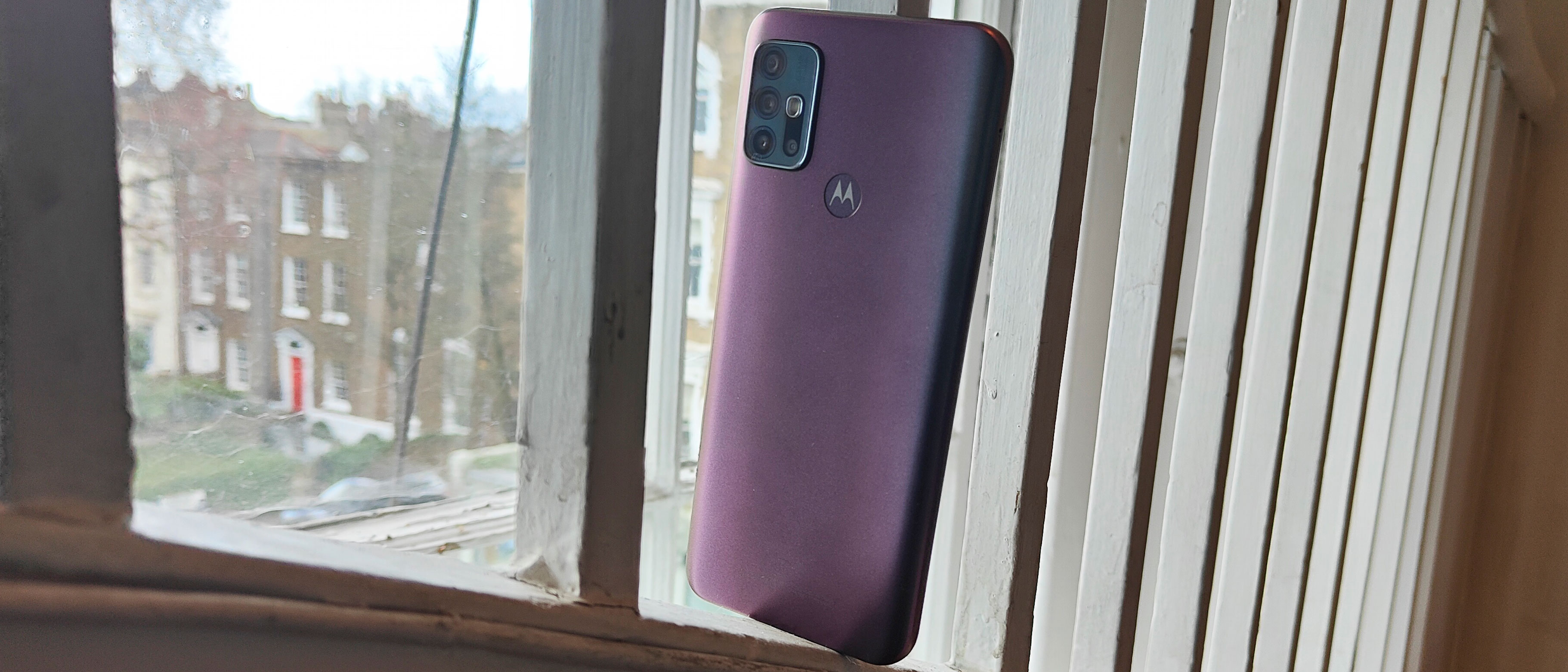TechRadar Verdict
The Moto G30 is good for its price, and certainly beats out its G10 sibling, as a fine all-rounder. Save for its stellar battery performance there are no stand-out aspects to the phone though, and depending on what you’re looking for, another handset might offer more.
Pros
- +
Excellent battery life
- +
Won’t break the bank
- +
Plenty of storage
Cons
- -
Fingerprint sensor issues
- -
Some may dislike Google Assistant button
- -
Low-res display
Why you can trust TechRadar
Two-minute review
The Moto G30, one of Motorola’s first cheap phones of 2021, launched alongside a lower-specced and more affordable sibling, the Moto G10. You can safely ignore that latter phone though – costing only a little more, and with much better specs, the Moto G30 is by far the better option of the two.
If you’re used to Moto’s G series of smartphones having low numbers, and suffixes like ‘Play’ or ‘Power’, the existence of what sounds like a 30th-generation phone might come as a surprise to you. Don’t worry though – you haven’t missed 20 years since the G10. In 2021, Motorola changed its naming strategy, and the Moto G10 and G30 are the start of a new line that will eventually get joined by more GX0 devices.
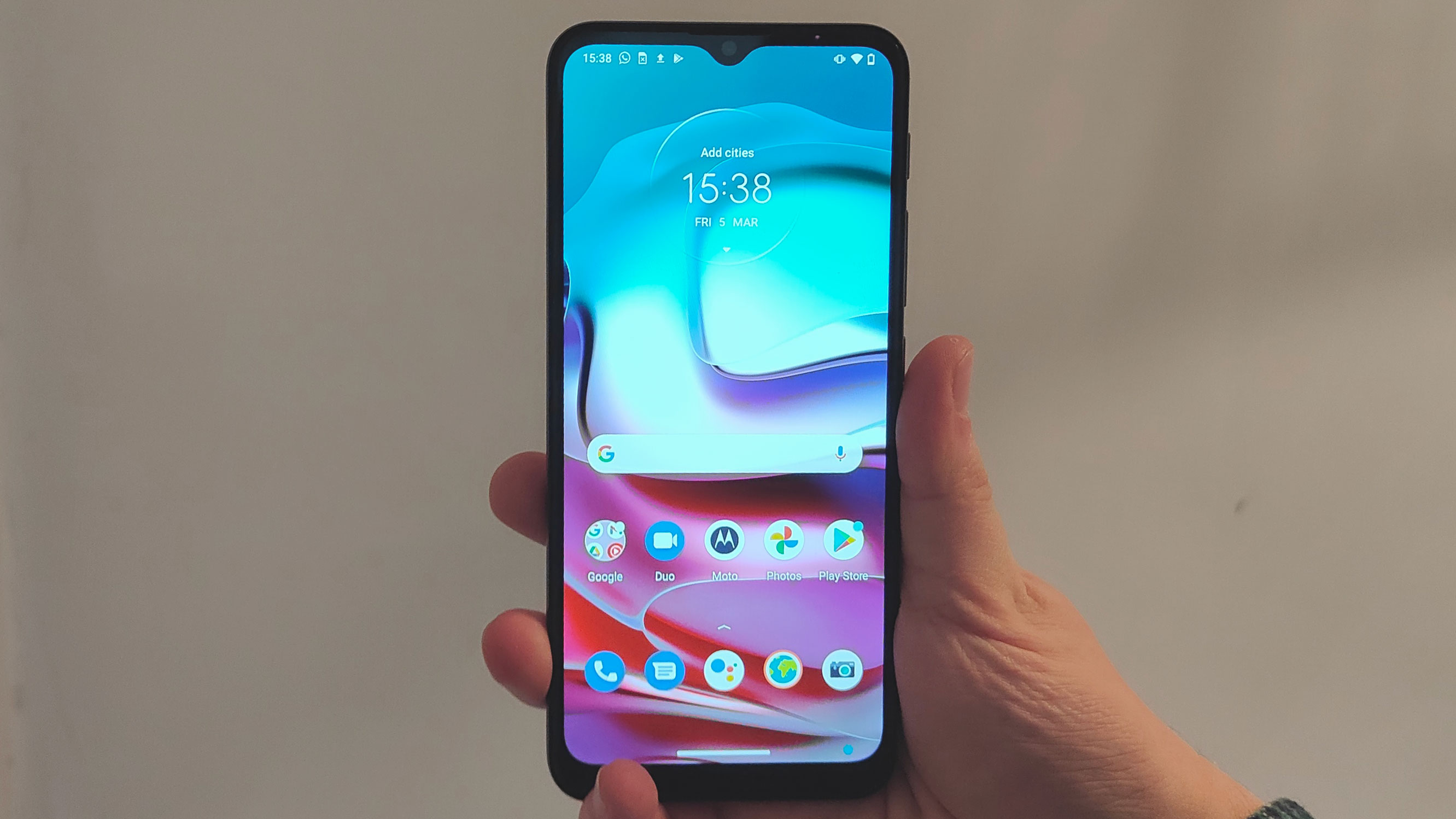
Price and availability
Design
Display
Cameras
Performance and specs
Software
Battery life
Should I buy it?
These are the most affordable of the new Moto G line though (a G20 could come out, but we’re not sure how that would sit between the G10 and G30), which as mentioned are already similar, so if you’re looking for a low-cost phone from Motorola and don’t want to opt for its super-cheap Moto E line, look no further than the Moto G30.
It’s hard to get enthused about the Moto G30 – it’s an affordable phone with low-end specs to match – but equally, it’s hard to be disappointed by what you’re getting for your money.
The G30 encapsulates what you want from a budget phone: its processing speeds aren’t snappy, but it’ll get you through most tasks just fine; its cameras aren’t incredible, but they do all you need them to; its design is utilitarian, but it’s a nice size for comfortable one-handed use.
If you’re looking for a new handset and the Moto G30’s price is your limit – that price being £159 (about $220 or AU$290) – you won’t feel hard done by. Spend just a bit more, though, and you’ll find phones with better cameras, higher-resolution screens and improved chipsets.
We found the Moto G30’s battery life to be very impressive – that’s likely the result of the low-res screen resolution, weak chipset and huge battery – so if nothing else, it’s dependable and long-lasting. The fact that it comes with 128GB storage is also worth commending, as that’s far from a given at this price tag.
Sign up for breaking news, reviews, opinion, top tech deals, and more.

We do have a couple of issues with the phone – the fingerprint sensor sometimes didn’t work right, and its Google Assistant button will be an inconvenience for anyone who doesn’t regularly use the tool.
So the Moto G30 has some plusses and some minuses, but we never felt that we were getting anything less than its price tag suggests.
Moto G30 price and availability
Starting at just £159 (about $220 or $290), the Moto G30 undercuts most of the Moto G9 line, although its Moto G10 sibling costs a little less again at £129 (about $180 or AU$235). While we’ll refer to that phone here and there when describing the G30, just to note the few differences between them, we should point out now that the G30 is better value for money.
The Moto G30, along with the G10, launched in Europe in February 2021.There’s no word on a global launch, but Motorola often launches its affordable phones under different names in different countries, so if this phone comes to the US or Australia, it could be under a different name.
Design
We found the Moto G30 easy to use with just one hand, thanks to its size and button placement. With dimensions of 165.2 x 75.7 x 9.1mm it certainly won’t get confused for a phablet, although it is a little on the thick side. It weighs 200g, which is slap-bang average for this kind of phone.
On the rear of the phone you’ll find the rectangular camera bump at the top-left, and just below and to the right of this is the fingerprint scanner. We found this easy to reach, but roughly one press in five wasn’t picked up first time. It’s easy enough to lift and re-apply your finger, but it’s still worth mentioning.
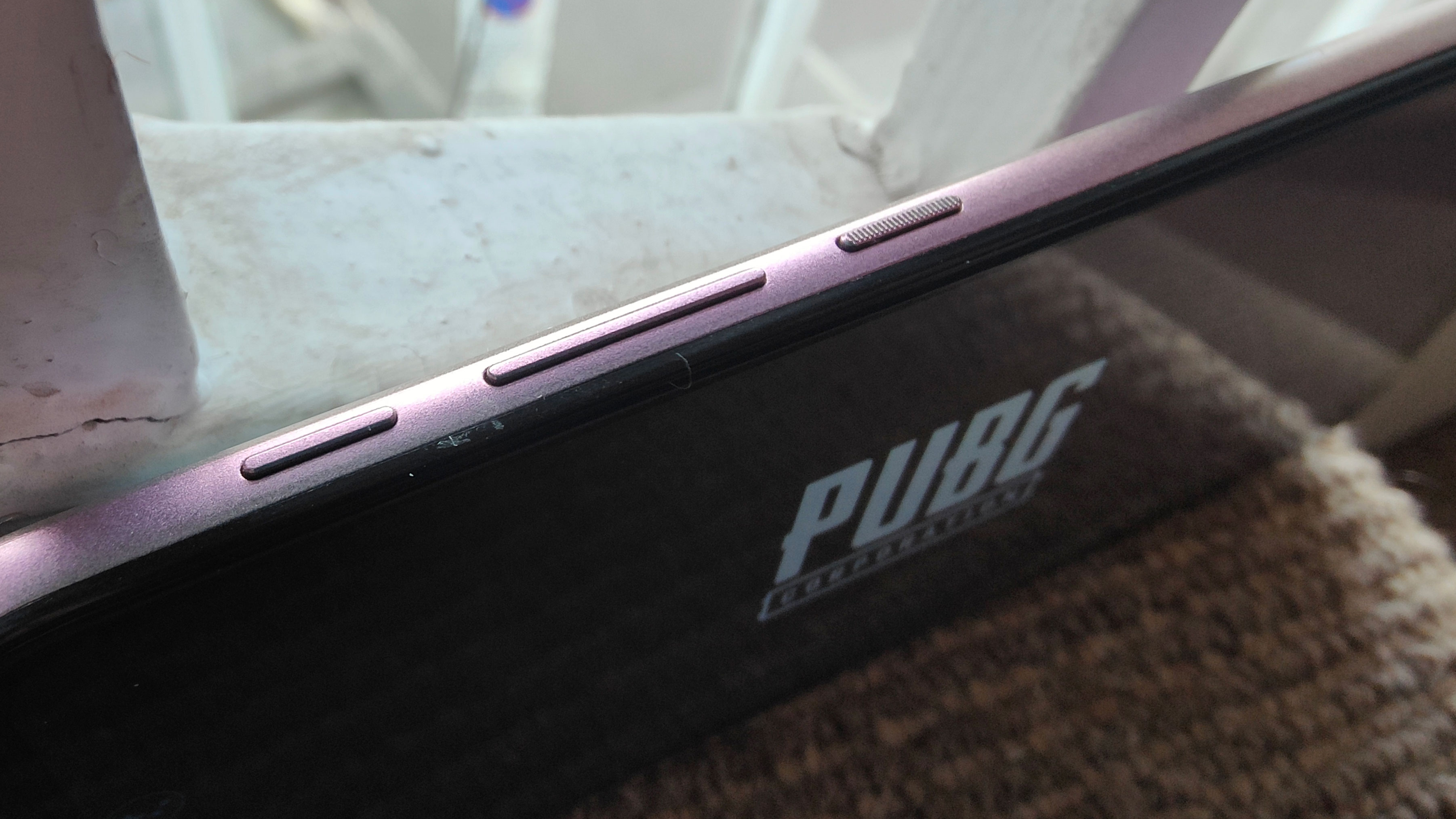
On the right edge of the phone are the power button and volume rocker, and above these, close to the top, is a Google Assistant button. This is something a few smartphone brands use, and your mileage with it will depend on how often you use Google Assistant. If you’re a big fan of the AI assistant you may appreciate having this button, but we’re not, and we didn’t use it; however, its high placement means it’s easy to accidentally press when you’re slipping your phone into your pocket, which can quickly become annoying.
The phone has a USB-C port and 3.5mm headphone jack, but these are on opposite edges of the phone, with the former on the bottom and latter at the top, so if you’re using both ports at once your phone will be sprouting cables from both ends. Good luck getting the thing in your pocket like this.
The Moto G30 has a plastic build – we tested the Pastel Sky unit, which looks gray, but at certain angles reflects a pink hue.
Display
The Moto G30 has a 6.5-inch LCD display with a 720 x 1600 resolution, which is lower-res than many other handsets, even at this price point – you’re likely to notice the difference when streaming movies or playing games.
The screen does have a 90Hz refresh rate though, which is a little surprising for an affordable device – this means the display updates 90 times per second, rather than the standard 60Hz, which makes motion look a little smoother.
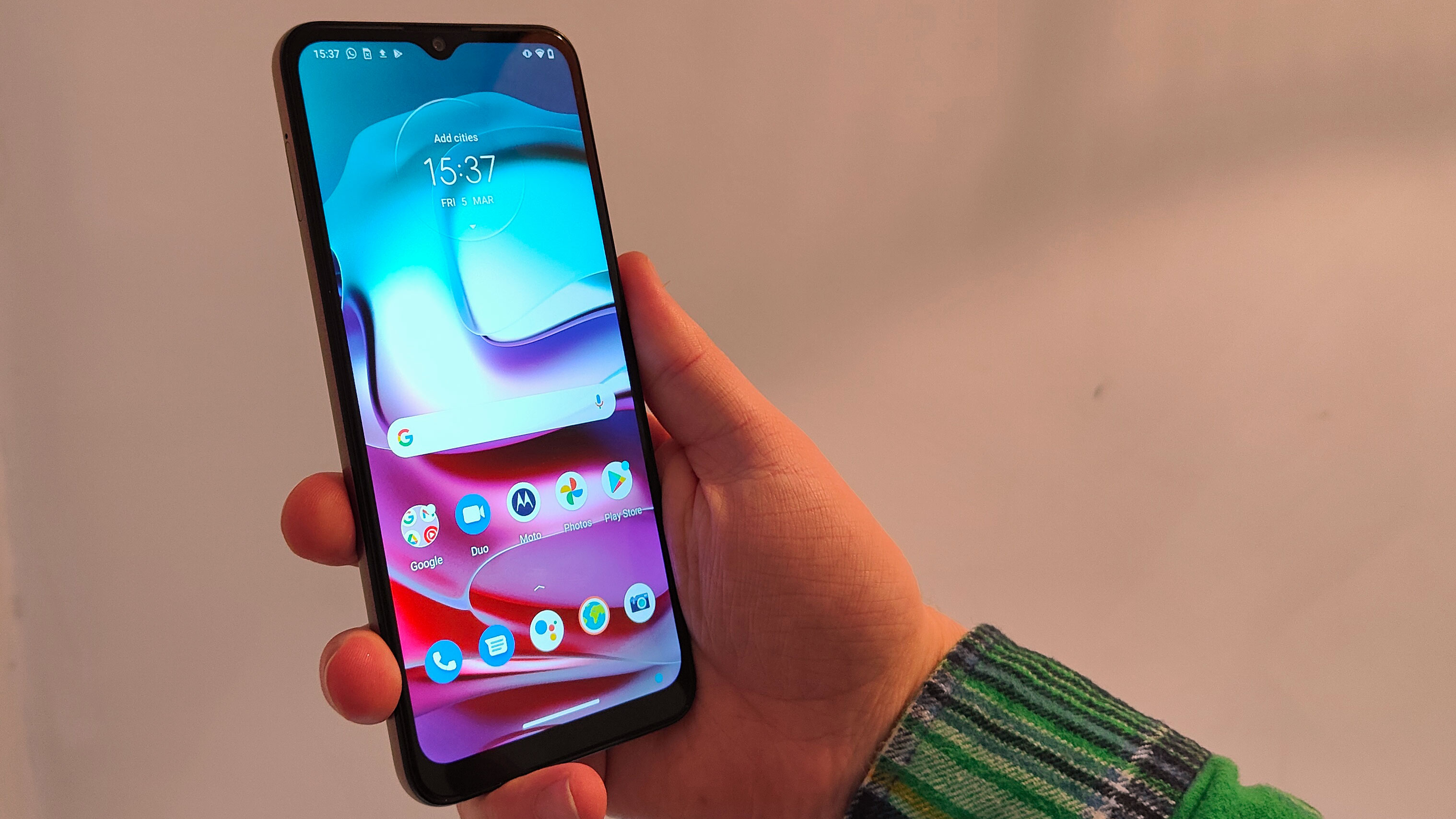
The screen size is just about perfect, as it’s big enough to enjoy videos or display lots of text on-screen, but not so large that the phone becomes unwieldy. We found the screen fit for all purposes, whether we wanted to watch some YouTube videos or browse Instagram, though when gaming we found ourselves longing for a 1080p display.
A slightly retro feature pops up in the Moto G30’s screen, in the form of a ‘tear-drop’ notch housing the front-facing camera. Few phones in 2021 use these, as even affordable devices typically sport ‘punch-hole’ cut-outs in the display, though wind back time a few years and we were seeing them everywhere.
Cameras
We’ve previously marked Moto phones down for having sub-par cameras for their price brackets, but while the Moto G30 isn’t exactly a photographic powerhouse, it’s more than fit for purpose, whether you want to take selfies everywhere you go, or capture snaps of every single pet you bump into.
The cameras here are 64MP f/1.7 main, 8MP f/2.2 ultrawide, 2MP f/2.4 macro and 2MP f/2.4 depth-sensing, with a 13MP f/2.2 front-facer for selfies.
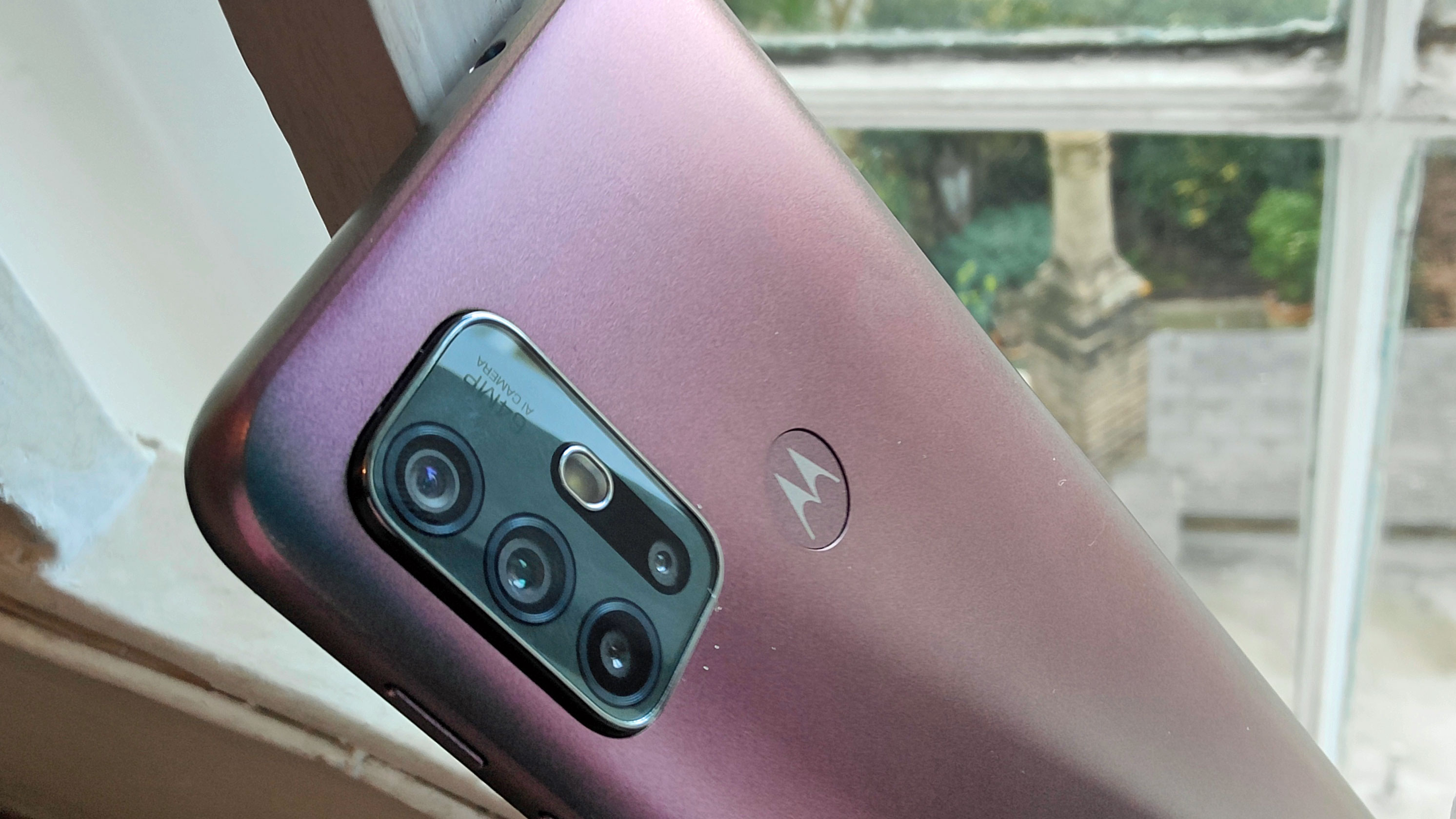
Snaps from the selfie camera were a little low-res, and perhaps a little pale compared to how our face actually looked, but clear nonetheless. We found ourselves preferring selfies taken using the standard photo mode rather than Portrait mode, as the latter made faces look a little unnatural, and background blurring wasn’t particularly accurate.
Pictures taken with the main camera were nicely detailed, with photos shot in well-lit environments looking especially good. Colors didn’t exactly pop, but in some cases that was made up for by strong contrast, resulting in dramatic-looking shots. A few of our pictures suffered from overexposure issues though.
We found the ultra-wide camera took pictures that were a touch brighter than those from the main camera, but had a yellowish tint to them, although you’d probably only notice this if you compared them side-by-side.
We’ve said it before and we’ll say it again: 2MP depth and macro cameras rarely add much to a phone’s photography capabilities, no matter how often brands choose to include them. We took a few good macro snaps, but the mode was quite hard to use, due to the fact that you have to put the phone so close to your subject that you risk blocking out the light. What good-looking pictures we did manage to take were all shot outdoors, in well-lit places.
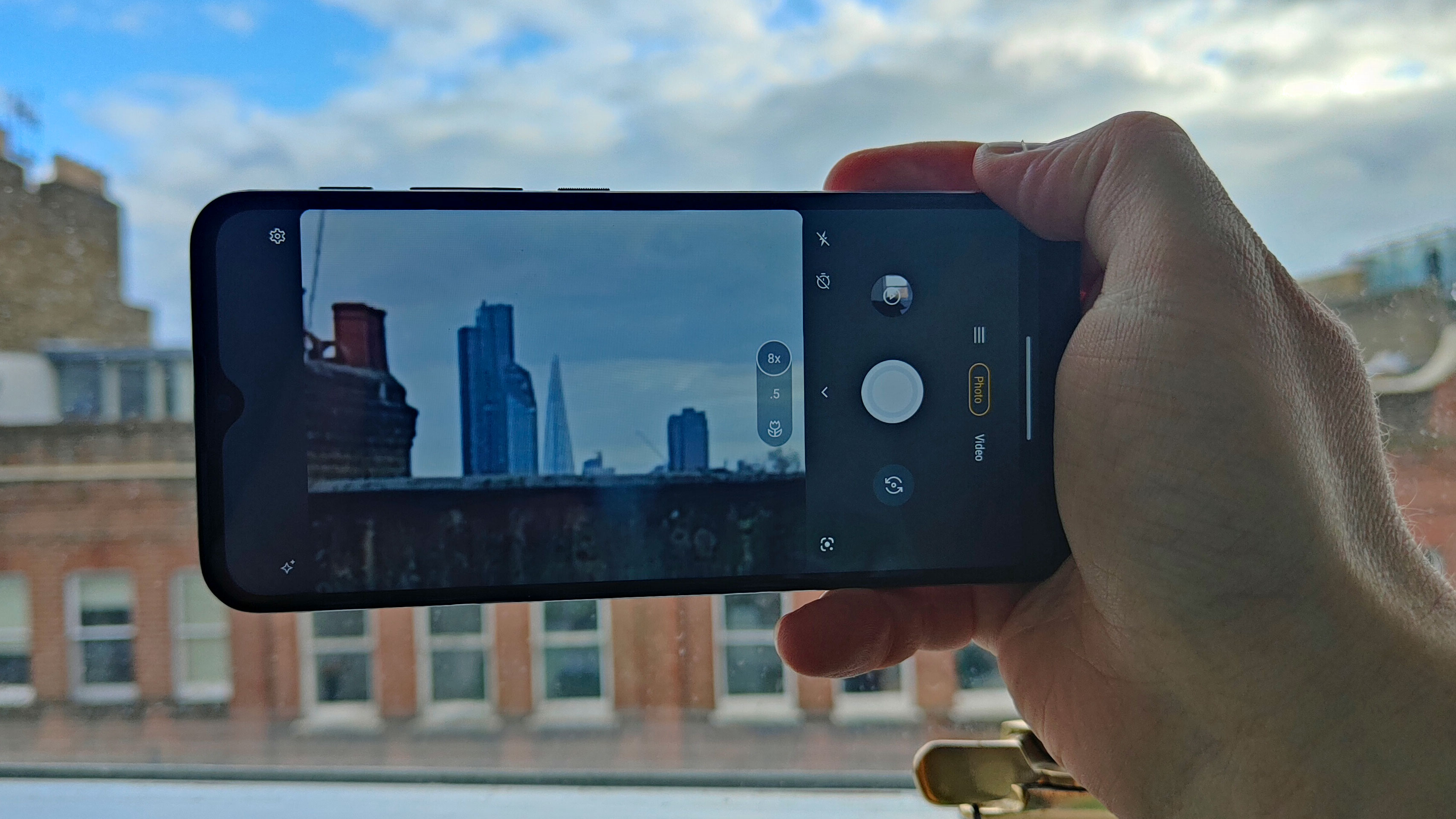
There’s no zoom camera here, but that’s to be expected on a budget phone. Instead you’ll have to resort to digital zoom, or cropping from main-camera photos, which lets you zoom in up to 8x. Thanks to the high-res main camera, we took a few not great, but not terrible-looking photos zoomed in this far.
Video recording is available at 1080p and 30fps or 60fps – sure, you’re not getting 4K recording here, but if you’re considering this phone we’d imagine that you’re not looking for or expecting high-resolution footage. The videos we shot were good enough for sharing and social media, although we found the autofocus a little jumpy.
The stock Google camera app is pretty clean, thanks to the various shooting modes, like Portrait, Night Vision, Panorama and more, being tucked away in a menu, so when you boot the app up there’s only photo and video available. This makes the camera app simple to use, especially if you don’t often need all those extra tools.
Camera samples

Taken on the main camera

A macro shot.

A selfie with portrait mode (but not enough beauty filters, clearly).

A standard picture.

This is what ultra-wide looks like.

An 8x zoom picture - and frankly, we've seen worse.

Taken with the main camera.
Performance and specs
The chipset is one area where the Moto G30 has a distinct advantage over the G10 – that phone has a Snapdragon 460 processor, but the Snapdragon 662 here is a fair improvement, and results in improved speeds across the board.
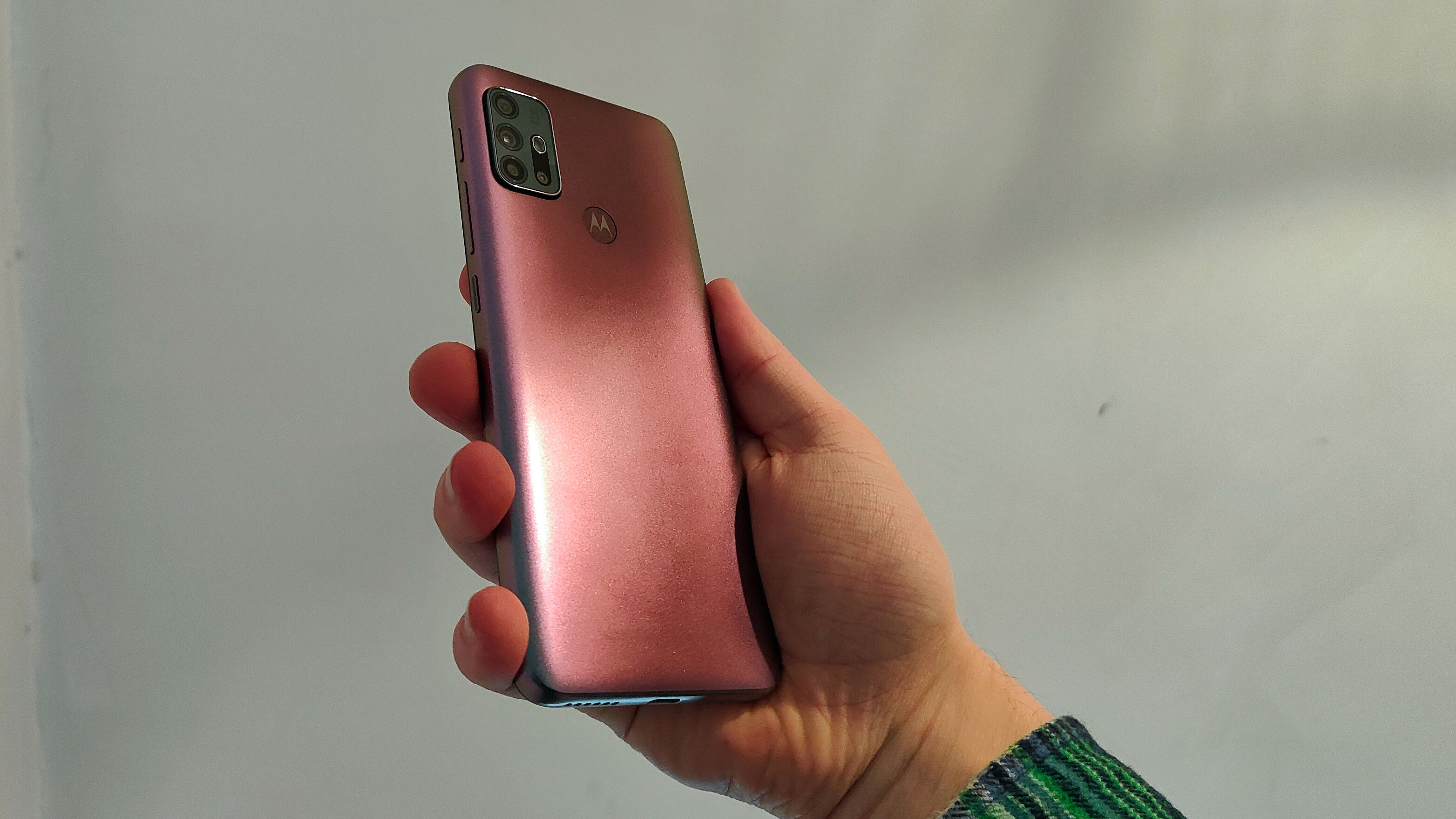
The Moto G30 posted a multi-core score of 1267 when we put it through a benchmark test – that compares to 1094 for the G10, 1324 for the G8 and 1690 for the Moto G9 Plus, and overall it’s on the low end of the score spectrum, but there are a good few weaker phones too.
Despite the low performance score we found the Moto G30 fine for gaming, and we made it through a good few bouts of PUBG Mobile without issue, though only on the lower graphics setting, and some more intensive games didn’t run as well. In fact, the low benchmark score surprised us, as it wasn’t reflected in our real-world experience. with the phone
The Moto G30 comes with 4GB of RAM and 128GB of storage – that storage number is great to see, as budget phones often stick with 64GB, or even a mere 32GB of storage. Unless you’re a power-user this should be enough storage for you.
Software
The Moto G30 runs Android 11, just as Google designed it. This means the phone has a clean-looking interface with circular app icons, few pre-installed apps and a range of useful extras like system-wide dark mode.
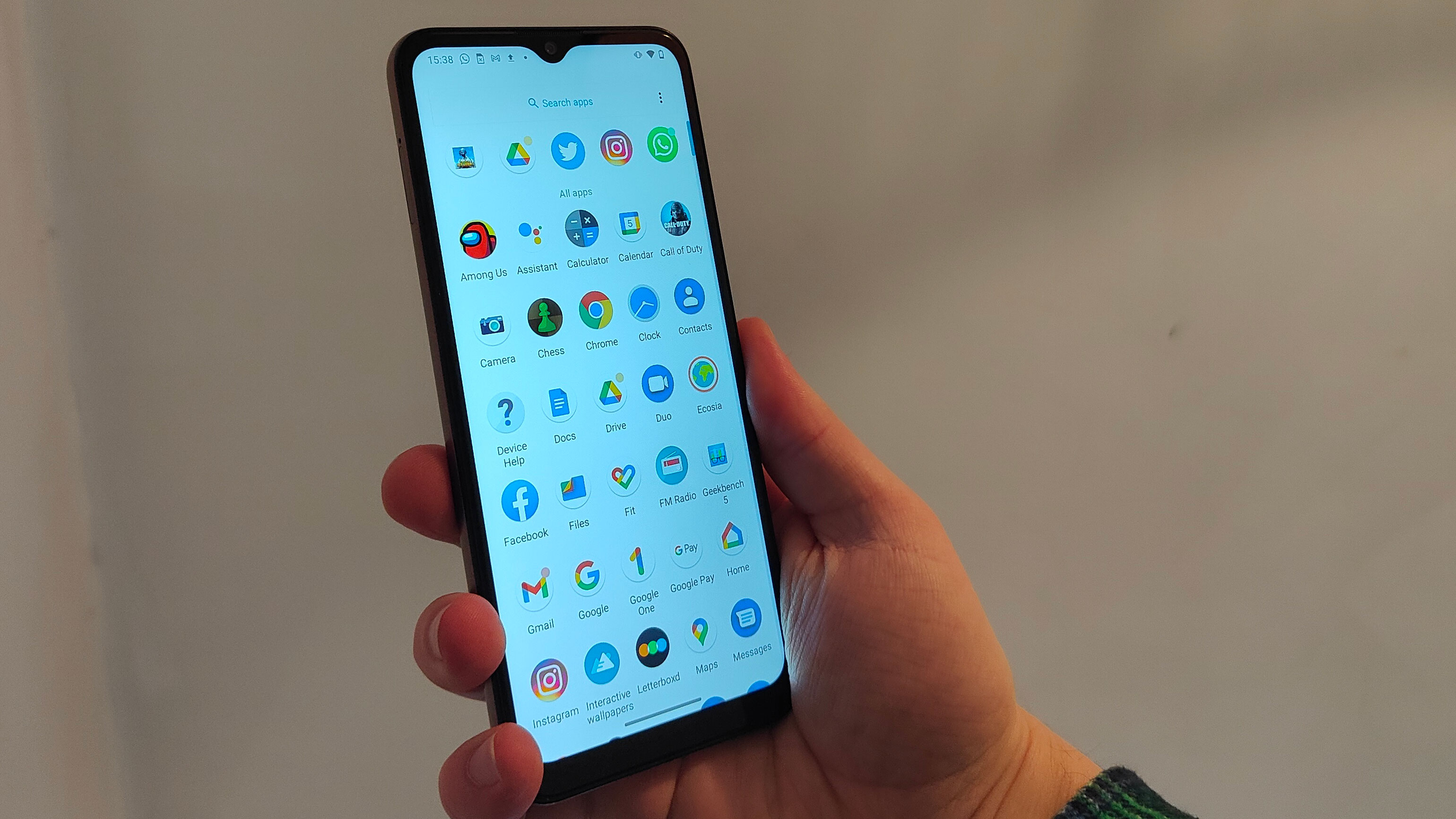
Motorola adds its own cherry to Google’s Android cupcake, and that’s Moto Actions. These are gestures that you can use to quickly launch apps and features – our favorite is a double karate-chop motion to turn on the flashlight, and another example is twisting the phone twice to bring up the camera. These are super-convenient ways to bring up key functions, and are a real reason why you might consider Motorola’s phones over the competition.
While the Moto G30 doesn’t have a stellar chipset, we didn’t notice any issues when navigating the OS. It’s quick enough to get around, though boot up certain apps and you might be waiting a while.
Battery life
The Moto G30 has a chunky 5,000mAh battery – that’s a big power back, and the fact that the phone has relatively weak specs means the charge isn’t going to be drained too quickly.
In our testing, we found the Moto G30 regularly ended the day with 50% battery left, and now and then we made it through two whole days without needing to power up, though that was with light use. You’ll never need to worry about this phone not lasting a full day, though.
Charging here is 20W, which isn’t too snappy, but beats some other Moto G phones. The phone gets a little warm when plugged in, but not worryingly so.
Should I buy the Moto G30?

Buy it if...
You need a long-lasting phone
The Moto G30’s battery will comfortably see you through a day, and two at a stretch, so it’s great for power-users, or people who aren’t diligent about keeping their phone topped up.
You’re on a budget
If your budget doesn’t stretch much higher than the G30, we’d recommend this phone over the G10, and it’s good value for your cash.
You need lots of storage
Not all affordable smartphones come with 128GB storage by default, especially at this price tier, so if you need space for lots of games or videos it’s a good option.
Don't buy it if...
You’re a hardcore gamer
While the Moto G30 played PUBG Mobile just fine, it didn’t run the higher graphics settings, and struggled with more demanding games. Regular gamers should look elsewhere.
You don’t use Google Assistant a lot
The Moto G30’s Google Assistant button is going to be more of a hindrance than a help if you don’t find yourself relying on the AI companion that much.
You’re an avid streamer
While the Moto G30’s 720p screen is fine for scrolling social media or reading the news, if you like watching videos or playing games you might prefer a device with a 1080p display.
- First reviewed March 2021

Tom Bedford joined TechRadar in early 2019 as a staff writer, and left the team as deputy phones editor in late 2022 to work for entertainment site (and TR sister-site) What To Watch. He continues to contribute on a freelance basis for several sections including phones, audio and fitness.
